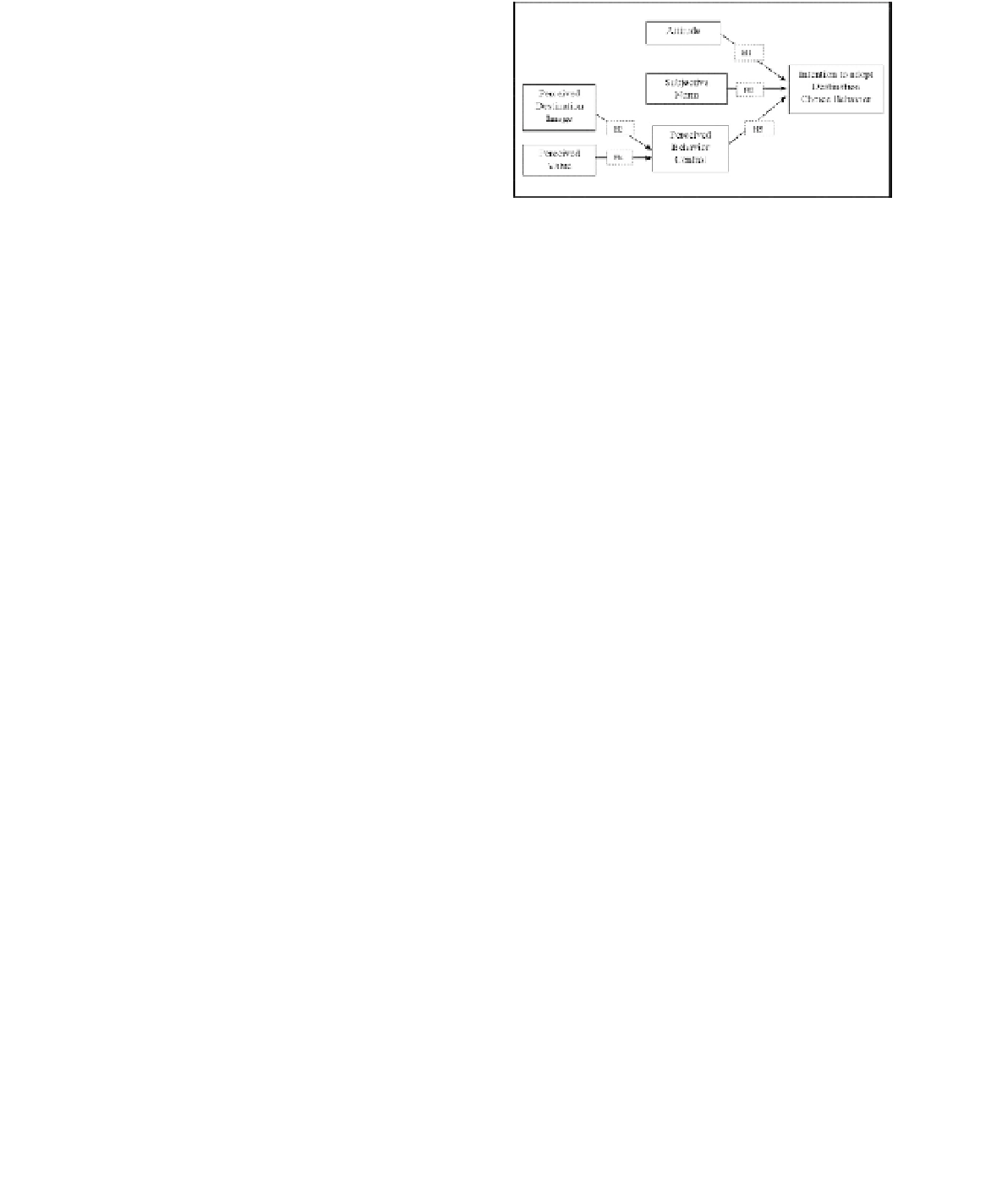Travel Reference
In-Depth Information
3.5
Perceived behavior control
According to Ajzen (1991), it is expected that those
who perceive more behavioral control have more
intention of performing that behavior. Perceived
behavioral control (Ajzen, 1985, 1991; Ajzen &
Madden, 1986) reflects the person's belief about
his or her own ability to perform the intended
behavior.
Ko (2011) found that medical tourism system
has significant influence on a patient's perceived
behavioral control. This model explains several
main elements of medical tourism as types of med-
ical tourists, medical tourists generating regions,
medical tourist destination regions, types of medi-
cal service providers, medical agencies, medical
tourism products, areas of medical tourism and
types of relevant human resources.
In medical tourism, many non-volitional fac-
tors may obstruct a successful outcome and this
includes language and cultural barriers, differences
in financial currencies. In these cases, the possibil-
ity of failure due to factors perceived to be beyond
the direct control of a person attempting to per-
form certain behavior will impact the likelihood
that she or he will actually attempt to perform that
activity (Martin, et al., 2011). Therefore, this study
will further investigate on the direct relationship
between perceived behavioral control and inten-
tion to adopt destination choice behavior. Hypoth-
esis developed as per below:
H5: There is a positive significant relationship
between perceived behavioral control and intention
to adopt destination choice behavior.
Drawing from the above literature, this paper
develops a conceptual model assessing medical
tourists' intention to adopt medical destination
choice behavior. Specifically, the proposed model
aims to: (1) assess the robustness of TPB with
attitude, subjective norms and perceived behavio-
ral control in affecting medical tourists' intention
towards adopting a medical tourism destination
choice behavior, and (2) to determine linkages
between perceived destination images, perceived
value and perceived behavior control. Following
the discussion, the conceptual framework gener-
ated as shown in Figure 1.
Figure 1. Conceptual framework.
Sources
: Adapted from Ajzen (1985), Huang (2009), and
Han and Hwang (2013).
method to be utilized in this phase is in the form
of focus groups; interactive interviews will also be
carried out to gather detailed information regard-
ing respondents' purpose of medical tourism visit.
The purpose in conducting qualitative is to con-
firm the framework develops and adding any input
from the first phase before proceeds to the second
phase.
The second phase involves quantitative approach
comprising of structured survey questionnaires
tapping on tourists' intention to adopt Malaysia
as a medical tourism destination choice. The cross
sectional technique will be used in collecting the
data. A series of a 7-point Likert scale will sub-
sequently be used to measure these constructs. A
total of 600 tourists will be identified as target
respondents for this study; judgmental sampling
will be used to assure representatives, and the unit
of analysis will be tapped on medical tourists vis-
iting Malaysia for seeking medical procedures in
private hospitals that registered under Malaysia
Health care Tourism Council and Joint Commis-
sion International accredited.
Data analysis will be utilized by using Social
Package Statistical Sciences (SPSS) version 20.0
and structural equation modelling (SEM) that
provides statistical procedures that include clus-
ter analysis and factor analysis, evaluation of the
measurement model and structural model develop-
ment respectively.
5 CONCLUSION
In essence, the research extends the application of
the theory of planned behavior by exploring its
relationship with destination image, perceived value
in adoption of destination choice. Understanding
individual's behavior is a result of multiple traits
beyond the disciplines of socio-psychology that
permeates within his/her internal driving forces.
Other than that, the study assess on the robust-
ness of the theory of planned behavior, attitude,
4 METHODOLOGY
Both qualitative and quantitative approach will be
used to develop the framework of research. The
first phase will use the unstructured methods to
confirm existing hypothesized constructs and/or
to identify potentially additional constructs that
may be relevant to the group being studied. The




Search WWH ::

Custom Search